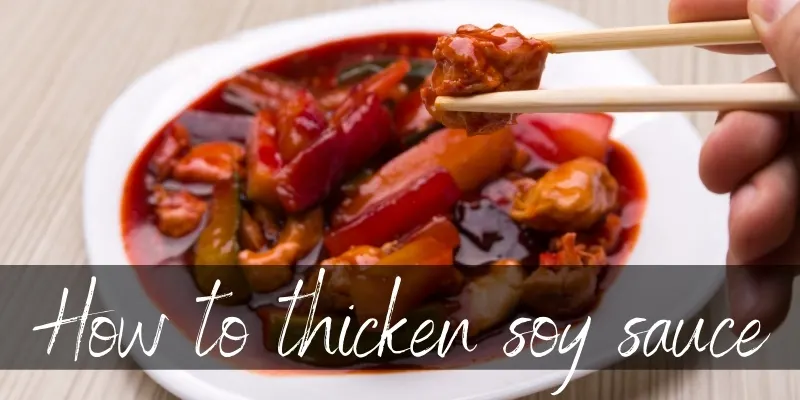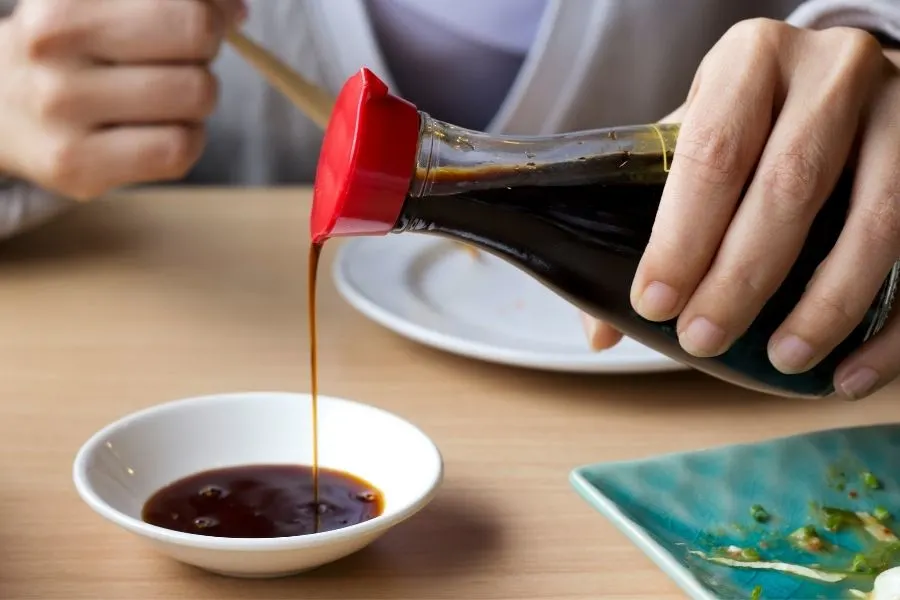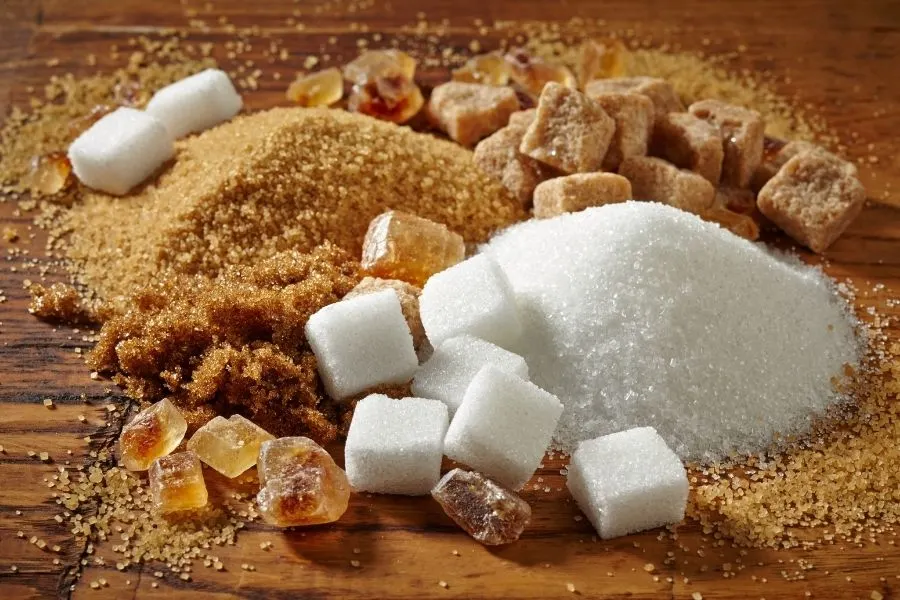Thickening soy sauce improves sweetness, texture, and consistency. Thicker sauce finds use in diverse recipes, including hot and sour soup, stir fry, and dips.
You’ll almost always need to thicken the sauce when cooking Asian dishes, and especially if you’re trying to replicate your favorite takeout.
So, today we’re going to show you just how to thicken soy sauce so you get the most luscious one out there.

How to thicken soy sauce
You can thicken soy sauce a number of ways, with the most common being using cornstarch, flour, rice starch, or simply making a soy sauce reduction.
If using a flour or starch, you need to add it to half a cup of cold water, stir it very well so there are no clumps, then pour the mixture into the soy sauce. Heat and simmer until it reaches the consistency you want.
You can do this with any sauce, be it soy sauce, teriyaki sauce, chili sauce or just gravy.
Thickening soy sauce with starch or flour
We’re going to give you a simple ingredient list, as you don’t need much to thicken soy sauce. We’re going to assume that any extra seasoning will be decided by you, feel free to add whatever flavorings you may like.
So to thicken soy sauce you will need:
- Soy sauce, as much as you need. Keep in mind you may need extra if it loses flavor while thickening
- Half a cup of water to mix the starch or flour in
- 2 teaspoons of cornstarch, wheat flour, rice starch, potato starch or any other starch you like
- (optional) 2 teaspoons of brown sugar
- (optional) any seasonings you like
You will need to mix the water and starch in a cup, mix them very well. Make sure there are no clumps at all. The mixture should be runny, so add more water if needed.
Once it’s all mixed, pour it into the simmering soy sauce. Be sure to stir continuously, on a low heat. Give it about 5 minutes and it will thicken. If you want any seasonings, add them now.
If you’d like it less thick, add less of the mixture, for example only half. If you add the entire mixture it will give you a sauce as thick as sour cream.
A word on commercial soy sauce
When buying soy sauce you will almost always find it in its regular, thin form. This is because often you’ll find hydrolyzed soy sauce, which is never thick and is a cheap knock-off.
Real, aged soy sauce will be a little bit thicker. Getting thick soy sauce only happens if you get very well aged bottles, as in aged for 3-4 years.
The color is much darker, the flavor much deeper and the entire experience is much more satisfying. You’ll find this kind of soy sauce in Asian markets, but you will have to pay extra.
Aged soy sauce is simply better, a little thicker, and most often not used in takeout. Its flavor is used in more refined dishes, but it’s worth looking for.
Can you thicken soy sauce with regular flour ?
Yes. Using flour as your thickening agent is simple, fast, and cost-effective. There sure is some flour already in your pantry, right? That is why using corn flour, rice flour, or wheat flour is the most popular way to thicken soy sauce. The ingredients are readily available.

The main thing that matters is the starch in the flour. Wheat, corn and rice, and even potato flour all have starch. Their dense or viscous texture also greatly helps in the thickening process. If you are going to thicken soy sauce with flour, here are the essential tips to remember:
- Thoroughly mix flour and water to avoid getting your sauce lumpy.
- After you add the flour solution into the sauce, heat over medium heat to allow it to cool.
- Heat the soy sauce-flour mixture for more than a minute so it can cook and attain the right textural consistency.
- Avoid the temptation to add flour to the sauce directly, you will end up with a lumpy mess.
Bear in mind that your home made thickened soy sauce may end up different form the one in takeout or Asian diners. This is because there’s always more than one ingredient going into the sauce.
Today we’re talking about how to make the sauce thick, but making the flavor resemble takeout is all in the seasonings. Chili flakes, dried garlic, dried onion powder, a little sugar, oyster sauce, soybean paste, sesame oil all work together to really make that sauce pop.
Read also: Can Soy Sauce Go Bad ? Here’s How Long It Lasts (+Storage Tips)
Alternate methods of thickening soy sauce
You may or may not want to add starch to your soy sauce. Maybe you’re watching your weight, maybe you just don’t like the idea of using starch at all.
No worries, there are two other ways of thickening soy sauce, and they work best if used together. It also depends on exactly how thick you want the sauce to be, because these methods will give you a sauce that only coats the back of a spoon.
Add sugar to soy sauce, simmer gently
Here is another ingredient that is likely already in your pantry. For this purpose, you will need brown sugar. It comes down to the same chemistry; starch.
Starch becomes sticky in water in a process called gelatinization. Sugar and starch are one and the same thing, except maybe for differences in molecular composition and bonding.
To make things more clear, starch (of any kind) is turned into sugar in our bodies when we digest, so you can simply use sugar instead.

How much sugar you use is up to you. Obviously the more sugar you add the thicker it can get, but this is not a fast process.
The upside is you can always add more fi you want to thicken it more. Just keep in mind that it’s easy to over do this, and you might end up with too sweet a sauce.
You will need soy sauce, and brown sugar, because we need the molasses to help thicken everything.
Place the sauce into a small pan and heat it on the stove. Add sugar as you stir and it will slowly thicken as the water in the soy sauce evaporates.
This can take 10 minutes or more, so take your time.
Read Also:Compote VS Confit VS Sauce
Soy sauce reduction
You don’t need any ingredients with this last method. It is called the heat reduction method. It relies on evaporation to reduce the water quantity of the sauce in the heating process.
Steam is just evaporating water, so in a few minutes your soy sauce will be thicker. You may have seen this done with balsamic vinegar, and the logic is the same.
Now, this can and will take more time than any other method. Once the sauce starts boiling, you will have to bring it to low, allow it to simmer and stir it every now and then.
Keep in mind that once it reduces it will be much stronger in flavor, since it’s won’t be diluted in as much water. This may be a good or a bad thing, depending on what you like from your soy sauce.
That is it. There are many ways to thicken soy sauce. The easiest way is to add a starch-water mixture to the sauce and heat. Sugar and starch work just as good.
If you don’t have these ingredients or don’t prefer your sauce too sweet, the heat reduction method is a simple starch-free way to gelatinize your soy sauce.

